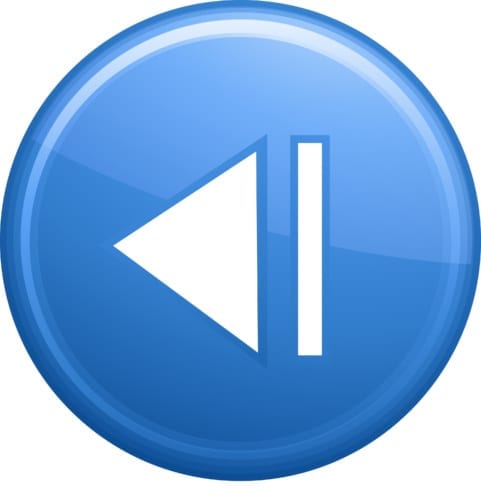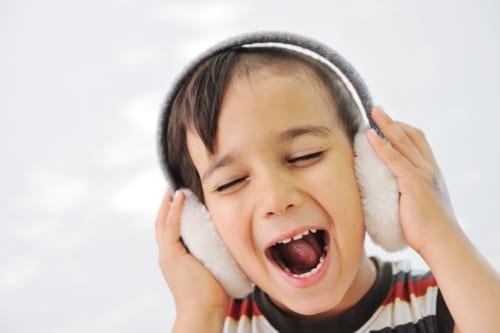Table of Contents
September 30 is International Podcast Day, put together as an international celebration of the power of podcasts. Podcasting has grown in recent years as a classroom strategy, providing a great option for multimedia student projects, enhancement of STEAM education, increased student engagement, a new way to teach the 4Cs and 21st Century skills, and much more.
In this article, educators and experts shared six of their favorite strategies for using podcasts in the classroom. Which is your favorite? To engage in the International Podcast Day conversation, use #InternationalPodcastDay on Twitter and share!
 1. Student Portfolio Podcast
1. Student Portfolio Podcast
Shared by: Meredith Allen (@msmeredithallen) ― Meredith is currently an Education Ambassador and Account Manager for Soundtrap, a collaborative music and podcast tool. Before joining Soundtrap, she was an Instructional Technology Consultant for Prairie Lakes Area Education Agency in Iowa and has also taught instrumental music and K-7 technology.
Grade Level and Subject(s): High School ― music technology, performance, or composition class
How it Works: One of my favorite classroom audio recording projects uses podcast creation as a portfolio of work throughout the year. The stage for this project could be any music technology, performance, or composition class. Students would create a personal portfolio podcast that highlights and discusses their best performances, compositions, and arrangements over a period of time. They learn the basics of working in a DAW (Digital Audio Workstation) and think critically through their musical choices, a skill that is essential for our 21st-century work world.
These students add their justification in narrative form and produce an artifact that documents their progress and showcases their skills. One expansion of this idea might be pairing up with a buddy, another class within the school, or a district from across the world…whatever collaborative route best fosters your thematic desire!
2. Replay to Listen Up
Shared by: Monica Burns (@classtechtips) ― Monica is Curriculum and EdTech Consultant, Apple Distinguished Educator and founder of ClassTechTips.com. She’s the author of three books, including her latest, Tasks Before Apps: Designing Rigorous Learning in a Tech-Rich Classroom, to be released in October. You can see Monica as a featured presenter at the Future of Education Technology Conference (FETC) in Orlando, January 23-26.
Grade level(s) and subject(s): K-12, all subjects
 How it works: Teaching students to replay is a strategy similar to re-reading. Students are using a wide range of media to learn new information. It’s important to help students understand how pressing rewind can boost their comprehension. When students listen to a podcast, encourage them to pause and rewind when they hear something new, interesting, or confusing. Building this listening behavior helps students self-monitor to make sure they understand the message being conveyed. Using the rewind button is a strategy students can use to gather a fact or detail to support their opinion or position on a topic. You can use the “replay strategy” across the subject areas with a podcast episode connected to your content goals for a lesson or unit of study.
How it works: Teaching students to replay is a strategy similar to re-reading. Students are using a wide range of media to learn new information. It’s important to help students understand how pressing rewind can boost their comprehension. When students listen to a podcast, encourage them to pause and rewind when they hear something new, interesting, or confusing. Building this listening behavior helps students self-monitor to make sure they understand the message being conveyed. Using the rewind button is a strategy students can use to gather a fact or detail to support their opinion or position on a topic. You can use the “replay strategy” across the subject areas with a podcast episode connected to your content goals for a lesson or unit of study.
3. Mentor Podcasts
Shared by: Audrey O’Clair (@audreyoclair) ― Audrey is an educational consultant specializing in educational technology, special education, and literacy. She has a deep understanding of the impact of assistive technology and uses her expertise to leverage the power of instructional technology in and out of the classroom. Audrey is an education ambassador for Soundtrap, a tool that enhances STEAM curriculum through music and podcasts.
Grade level: pK-2
How it works: Podcasts may be an unfamiliar medium for our youngest learners. Just as good writers need to read many types of print, good podcasters need to listen to many types of recorded performances. Before we can ask our learners to begin to develop their own unique podcast, we should expose them to many examples, both professionally produced and produced by other children.
As a whole group or small group, listen to high-quality podcasts and take the time to notice what went into their production. Ask questions like these when listening: Who is the intended audience? What did you observe about the style or message? What do you think matters most to the podcasters? What do you think the producers want their podcast to achieve?
Ask questions like these before beginning your own class podcast: Who do we want our audience to be? What is our style going to be? What matters most about our message? What are our biggest dreams for the podcast? What steps do we need to take to achieve our podcast? Start small with youngsters and allow for lots of experimentation. Celebrate when improvements are made in parts rather than focusing on the whole. Allow for learners to create a podcast to demonstrate knowledge in a non-written format.
 4. Create Interactive Video Postcards to Classrooms Across the World
4. Create Interactive Video Postcards to Classrooms Across the World
Shared by: Jeff Bradbury (@TeacherCast) ― Jeff is the author of Kidblog: An Introduction to Blogging With Your Students, and the creator of TeacherCast.net, TeacherCast University, and Educational Podcasting Today. He is currently the Coordinator for Technology Integration for the Westwood Regional School District in New Jersey.
Grade level: Great for Elementary, but could be K-12
How it works: Everyone remembers being in school and writing to a pen pal from another school, state, or country. It was a very enjoyable activity where you had the opportunity to meet someone new and learn about a different climate or culture. With today’s technology advancements, this type of activity has been replaced with quicker forms of communication such as email, text messaging, and even video conferences. But what if…
What if you and your class created a video journal that involved audio, video, and an interactive component to really teach others about what it is like in your classroom?
By using Google Slides, or PowerPoint, you can set up a series of slides to act as journals. These slides can contain audio responses or video clips embedded right into the slides along with other interactive examples of work being done in school.
One of the best parts of podcasting is that there really are no rules to follow. Creating audio and sharing it with each other is just as important as wrapping that audio inside of a slide presentation to provide additional content for your listener.
 5. Bring The Story to Life
5. Bring The Story to Life
Shared by: Taylor Haun (@TaylorHaun) ― Taylor has taught full-time in some of the nation’s top music programs in Plano ISD, Leander ISD, and Austin ISD since graduating from the Jacobs School of Music at Indiana University. He’s the founder of Odo Sound, which helps students learn the creative side of music.
Grade level: 4th grade and up
How it works: Audio recording and podcasting allow any creative writing project to come to life. Students can add another dimension to their stories when they use creative audio. Classes can then share the new-and-improved stories in a podcast! Here’s what to do:
- Write a short story.
- Record your voice as you narrate the story (this is your “voiceover”).
- Find samples and loops that fit your story.
- Place the samples and loops in order underneath your voiceover.
- Put the finishing touches on your story/song.
- Export from your audio editing program (Soundtrap works great!).
- Share your story via podcast or social media!
This project can be as simple as just adding one musical loop for the whole story. For older students, stories can include music that changes with the arc of the story, sound effects that accentuate story elements, like a creaky door sound for a haunted house story. The sky’s the limit, this is the perfect opportunity to let the students’ creativity develop.
For an example, check out the story of Jack Danger here:
 6. Soundtrack to Your Feelings
6. Soundtrack to Your Feelings
Shared by: Meredith Allen (see strategy 1 for Meredith’s full information)
Grade Level and Subject(s): 4th-12th grades ― Special Education, Behavior Disorder, or Mainstream Classroom
How it Works: Students who suffer from emotional and behavioral disorders might find it difficult to control their behavior at times. These students might lack the impulse control and the emotional balance that is necessary to effectively handle social interactions with other students. A time-out or a break might be needed. When a student reacts or needs to step back and reflect, they could use Soundtrap to help own their feelings while moving forward in a positive manner.
The vast amounts of pre-recorded loops are great tools to use for the students’ creation of “how they feel” or “how they want to feel.” Very little traditional music training is needed. The student would simply need headphones and access to the loop library. It is amazing to see how their profound feelings are translated to music. You can expand this further to be the background musical track to a possible narrative, a soundtrack to their feelings.
- Education Week – Teaching the Art of Listening: How to Use Podcasts in the Classroom
- The New York Times – Announcing Our 2017-18 Student Contest Calendar
- T|H|E Journal – Six Steps to Creating Engaging and Effective Classroom Podcasts






